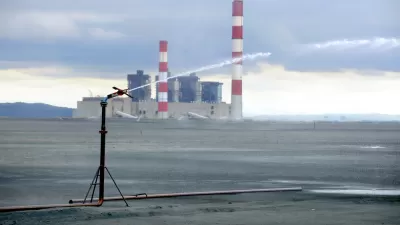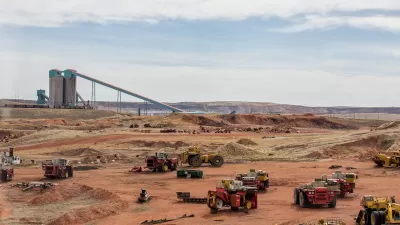A familiar refrain: the EPA proposes new regulation of energy production, and the utility industry responds that new requirements will increase costs. The Center for American Progress recently looked back at how clairvoyant those claims proved to be.
Tina Casey picks up on the findings of a recent report from the Center for American Progress (CAP) that responds to recent outcry by the coal and utility industries over the new, perceived threats in the “war on coal”—namely, “a pair of divisive E.P.A. regulations that are to set new limits on carbon pollution from coal-fired power plants.”
Casey describes the report as “a history of similar warnings about coal regulation”—predictions which failed to account for the positive impact of innovation, including the economic benefits of improved public health. A few examples:
- 1977: "Utilities and related industries predicted an 'economic disaster' from new pollution scrubber regulations. By 1981, the National Commission on Air Quality determined that was wrong, and the bipartisan group had the figures to prove it. The estimated cost of installing new equipment was $16.6 billion in 1978, while the economic benefits of improved air quality ranged from $4.6 billion to $51.2 billion per year."
- 1989: "In response to the acid rain bill, the lobbying group Edison Electric Institute (EEI) issued a detailed report predicting a dramatic rise in electricity rates over a 20-year period. CAP’s own analysis of actual utility rates in 2009 — 20 years later — showed that the prediction was 'flat-out wrong.'"
In response to recent claims by the coal and utility industries that new regulations by the EPA would pass the cost of implementation down to consumers, casey and CAP describe a different reason for potential increases in utility rates: “the main driver of utility rates will not be the power plants or the fuel they use, it will be the urgent need to overhaul the nation’s aging, badly outdated electricity distribution and transmission grid.”
FULL STORY: ‘War on Coal’ is Not the Real Reason Your Utility Rates Will Go Up

Planetizen Federal Action Tracker
A weekly monitor of how Trump’s orders and actions are impacting planners and planning in America.

Maui's Vacation Rental Debate Turns Ugly
Verbal attacks, misinformation campaigns and fistfights plague a high-stakes debate to convert thousands of vacation rentals into long-term housing.

San Francisco Suspends Traffic Calming Amidst Record Deaths
Citing “a challenging fiscal landscape,” the city will cease the program on the heels of 42 traffic deaths, including 24 pedestrians.

Amtrak Rolls Out New Orleans to Alabama “Mardi Gras” Train
The new service will operate morning and evening departures between Mobile and New Orleans.

The Subversive Car-Free Guide to Trump's Great American Road Trip
Car-free ways to access Chicagoland’s best tourist attractions.

San Antonio and Austin are Fusing Into one Massive Megaregion
The region spanning the two central Texas cities is growing fast, posing challenges for local infrastructure and water supplies.
Urban Design for Planners 1: Software Tools
This six-course series explores essential urban design concepts using open source software and equips planners with the tools they need to participate fully in the urban design process.
Planning for Universal Design
Learn the tools for implementing Universal Design in planning regulations.
Heyer Gruel & Associates PA
JM Goldson LLC
Custer County Colorado
City of Camden Redevelopment Agency
City of Astoria
Transportation Research & Education Center (TREC) at Portland State University
Jefferson Parish Government
Camden Redevelopment Agency
City of Claremont




























